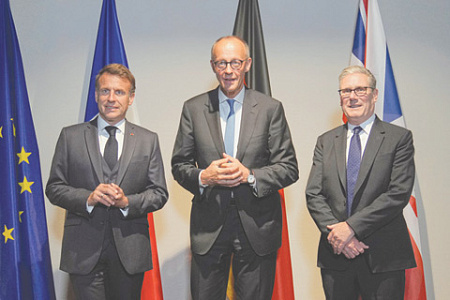
The unexpected announcement of a personal summit between Donald Trump and Vladimir Putin, set to take place in Alaska, has sent shockwaves through Washington’s alliances, particularly in Europe. While European Union leaders share a desire to end the protracted and bloody conflict between Moscow and Kyiv, the potential price of peace brokered secretly between the US and Russia is a source of profound anxiety. The apprehension is magnified by President Trump’s refusal to brief allies on the terms he intends to propose, prompting a rare and unified warning from NATO and EU leaders: the fate of Ukraine cannot be decided without Ukraine and Europe at the table.
The news of the August 15th meeting caught Western governments and the public by surprise, fueling a mixture of hope and dread. While commentators see a potential, tangible chance to halt the Russia-Ukraine war, a complete lack of transparency shrouds the agenda. It remains unknown whether Ukraine will be the sole focus or merely one component of a larger US-Russia grand bargain, and whether any discussion will include the lifting of sanctions. This information vacuum has left key European policymakers deeply concerned about the potential for a backroom deal that undermines their interests and principles.
In a display of uncharacteristic speed, European leaders mobilized. Within hours of the announcement, French President Emmanuel Macron, British Prime Minister Keir Starmer, Italian Prime Minister Giorgia Meloni, German Chancellor Friedrich Merz, Polish Prime Minister Donald Tusk, Finnish President Alexander Stubb, and European Commission President Ursula von der Leyen convened to issue a joint statement. The document effectively outlines a set of preconditions for their endorsement of any agreement reached in Alaska, drawing clear red lines for Washington to consider.
Their primary condition is a direct rebuke of any great-power arrangement: the path to peace cannot be determined without Ukraine’s full participation, effectively demanding a veto power for Kyiv. This stance aims to avert a repeat of a dark chapter in European history. As one Estonian official noted, Alaska must not become a “new Yalta,” referencing the 1945 conference where the Allied leaders redrew the map of Europe, consigning Eastern European nations to the Soviet sphere of influence without their consent. The second condition insists on “durable and reliable security guarantees” for Ukraine. While the statement avoids explicitly mentioning NATO, Ukrainian President Volodymyr Zelenskyy has consistently argued that only full membership in the alliance can provide a credible deterrent.
Further conditions stipulate that negotiations must begin with a ceasefire along the current line of contact, a direct contradiction of Russia’s long-held position that the conflict’s underlying causes must be addressed before any cessation of hostilities. Finally, the leaders reaffirmed their unwavering commitment to Ukraine’s “sovereignty, independence, and territorial integrity.” However, media reports citing anonymous European officials suggest this principle might be flexible, hinting at a potential land-for-peace deal where Ukraine would cede Donbas and Crimea in exchange for peace and security guarantees, a scenario that would require a creative, face-saving diplomatic formula.
Navigating the legal intricacies of such a territorial exchange presents a formidable challenge, as both Russian and Ukrainian constitutions contain clauses protecting their territorial integrity. Some experts have floated complex historical precedents, such as a “condominium” arrangement involving joint sovereignty over disputed territories. However, President Zelenskyy has publicly reiterated Ukraine’s official stance, rooted in its constitution, that its borders are not negotiable. As the world watches, the central questions remain unanswered: will Kyiv be a participant or a subject of discussion in Alaska, and can a secret summit between two leaders bridge the vast chasm between the demands of peace and the principles of sovereignty?
